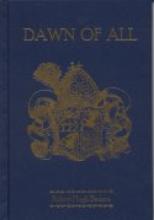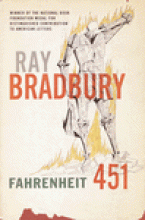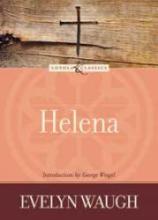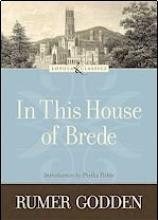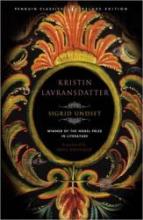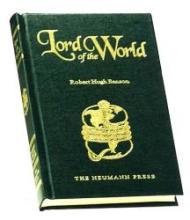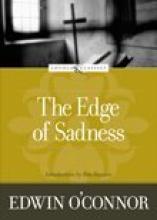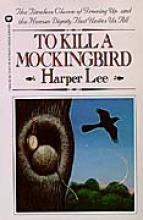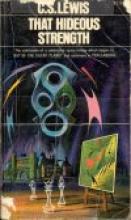Literature Mature Teens
Dawn of All
Subject(s):
Grade / Age level:
Review:
This book, together with its counterpart Lord of the World, is an early venture into the "speculative" genre of fiction. Written in 1911, it could be considered early science fiction with its descriptions of future technology, but it is really much more a religious and philosophical exploration of the effects of belief systems on society.
Msgr. Benson wrote the book, he comments in a preface, as a response to readers of Lord of the World who felt he painted too bleak a picture of a future where Christianity was marginalized and all but extinguished by the forces of Modernism. This book takes the opposite premise as a starting point - that the truth of Catholic claims have been almost universally recognized except by a few stubborn Socialists.
A dying priest of the turn of the century, who has lost his faith to the modern conceptual framework of science and psychology, slips into a coma and find himself, with no memory of his past, in a future world which seems strange and unsettling to his Modernist sensibilities. The science and psychology communities studying miracles under the authority of religion at Lourdes? An Ireland which has become basically a country-wide contemplative order? Learned men telling him pityingly that it is only the half-educated mind which can compartmentalize faith and reason rather than realizing they are both tools for the search for Truth? The USA government a monarchy, with Massachusetts a haven for a last remnant of earnest, earthbound Socialism?
The searching, intellectual, slightly distanced tone of these observations suits the character of the protagonist-priest. With his intellect, he sees the force of the Catholic claims; but his heart continues to resist. A crisis comes when he witnesses the trial and execution of a pure-minded but self-confessed heretic priest under the secular authority. How can this be right? Can this ascendant Church, whose supremacy is acknowledged world-wide, be truly the Church of its suffering servant Founder? In a world where societies punish heresy as a crime, and "freethinkers" are sent to exile, how can church leaders claim to be allied with He who is meek and humble of heart? The church has shown herself to have the Truth, but does she have a heart?
Monsignor Benson uses this projected future society to explore some of the criticisms of our past, historical Church and offer some perspective on the paradox of a Holy Church whose earthly work is carried out by weak, fallen man. I don't think it is any coincidence that the dying priest has lost his faith while co-writing a book about the popes. When a ferocious German socialist party, willing to annihilate the world rather than concede defeat, threatens Europe and kills Catholic envoys, it is a pope who show how meekness and courage can be reconciled with authority in one person, the person of Christ's Vicar.
Reading this book, the Catholic reader must examine his assumptions and think about profound topics. Though the reading and interest level is suitable for a ninth grader, I think the novel should be read under supervision, with some care to explain to the student the genre and intentions of the book. I think it would be more profitably read along with the companion novel Lord of the World and possibly as a starting point to a study of various ideologies and how they affect the day to day details of society.
Msgr. Benson wrote the book, he comments in a preface, as a response to readers of Lord of the World who felt he painted too bleak a picture of a future where Christianity was marginalized and all but extinguished by the forces of Modernism. This book takes the opposite premise as a starting point - that the truth of Catholic claims have been almost universally recognized except by a few stubborn Socialists.
A dying priest of the turn of the century, who has lost his faith to the modern conceptual framework of science and psychology, slips into a coma and find himself, with no memory of his past, in a future world which seems strange and unsettling to his Modernist sensibilities. The science and psychology communities studying miracles under the authority of religion at Lourdes? An Ireland which has become basically a country-wide contemplative order? Learned men telling him pityingly that it is only the half-educated mind which can compartmentalize faith and reason rather than realizing they are both tools for the search for Truth? The USA government a monarchy, with Massachusetts a haven for a last remnant of earnest, earthbound Socialism?
The searching, intellectual, slightly distanced tone of these observations suits the character of the protagonist-priest. With his intellect, he sees the force of the Catholic claims; but his heart continues to resist. A crisis comes when he witnesses the trial and execution of a pure-minded but self-confessed heretic priest under the secular authority. How can this be right? Can this ascendant Church, whose supremacy is acknowledged world-wide, be truly the Church of its suffering servant Founder? In a world where societies punish heresy as a crime, and "freethinkers" are sent to exile, how can church leaders claim to be allied with He who is meek and humble of heart? The church has shown herself to have the Truth, but does she have a heart?
Monsignor Benson uses this projected future society to explore some of the criticisms of our past, historical Church and offer some perspective on the paradox of a Holy Church whose earthly work is carried out by weak, fallen man. I don't think it is any coincidence that the dying priest has lost his faith while co-writing a book about the popes. When a ferocious German socialist party, willing to annihilate the world rather than concede defeat, threatens Europe and kills Catholic envoys, it is a pope who show how meekness and courage can be reconciled with authority in one person, the person of Christ's Vicar.
Reading this book, the Catholic reader must examine his assumptions and think about profound topics. Though the reading and interest level is suitable for a ninth grader, I think the novel should be read under supervision, with some care to explain to the student the genre and intentions of the book. I think it would be more profitably read along with the companion novel Lord of the World and possibly as a starting point to a study of various ideologies and how they affect the day to day details of society.
Perspective:
Catholic
Reviewed by:
First reviewed:
3-19-02
Fahrenheit 451
Subject(s):
Grade / Age level:
Review:
Fahrenheit 451 is on the reading list of almost every high school in America, and with good reason. It is thought provoking and hip. There are reasons to love this book and reasons to worry about it. It is Bradbury's reaction against censorship and the blossoming of television. Some of the things he writes about have come true in our time, which makes his story all the more intriguing.
First the story: it is in the future, but not too far off, with global war looming. The protagonist, Guy Montag, is a fireman. Books have been banned and anytime a cache of them is found, the firemen are dispatched to burn them. As the story develops the reader finds out why books are illegal. Evidently in the past, some special interest groups wanted certain things out of books so they wouldn't offend people. As more and more of these things were censored out of books, they became insipid. Television became an alternative to books and the focal point of the lives of most people. The ideas in real books are seen as dangerous, as possibly making people think or feel, so they must be destroyed.
Guy is seemingly content until he meets a young girl whose family reads books and actually speaks to each other. This attracts him and the reader finds out he has a stash of books in his house that he has taken from various burns. He is also very moved by a woman who dies in a fire intended to burn her books. He starts to desire books more and more and finally, after he scandalously reads poetry to his wife and her friends, he is doomed and his house is burned. He tries to escape the law and gets helps from an old professor. He finally makes it out of the city and finds a whole community of "books," people who have memorized books, including the Bible, so that when the great war comes and people need books and their beauty again, they will be available. Just as he meets these book people, the bombs begin to drop.
In the edition that I read, Bradbury writes a 25-years-later "coda" about the public's reaction to his story. For example, he has had feminists tell him that he should have more strong female roles in his stories. They do not see that they are doing just what he describes as causing the demise of books in this story. He finds it ironic that special interest group publishers without his permission have censored his book. What they were trying to cleanse was his language. There is some swearing in the book, but it does not detract from the genius of the story. Guy Montag longs more and more for what people had in books, for the beauty of words and ideas, and ultimately, for the chance to be human again.
This story would be good for a high school junior or senior who is ready for serious discussion on the themes of censorship and the movement of society toward technology. With more and more youth turning to visual technology, and especially interactive visual technology as Bradbury describes, this story is a great testament to keeping literature and the ideas of the ages present in our home schools.
Reviewed by:
First reviewed:
5-6-04
Helena
Subject(s):
Setting:
Grade / Age level:
Review:
Perspective:
Catholic
Additional notes:
Part of Loyola Classics Series
Reviewed by:
First reviewed:
11-4-2007
In This House of Brede
Subject(s):
Grade / Age level:
Review:
Reviewed by:
First reviewed:
8-21-06
Kristin Lavransdatter
Subject(s):
Grade / Age level:
Review:
I am delighted to see a popular edition by Penguin Classics of one of the world's greatest woman writers settling itself to be in print for any foreseeable future. This review refers to the 2005 paperback edition of the combined trilogy of Sigrid Undset’s master work Kristin Lavransdatter, translated by Tiina Nunnally.
The Penguin Classics page does a great job at introducing the novel to the public:
In her great historical epic Kristin Lavransdatter, set in fourteenth-century Norway, Nobel laureate Sigrid Undset tells the life story of one passionate and headstrong woman. Painting a richly detailed backdrop, Undset immerses readers in the day-to-day life, social conventions, and political and religious undercurrents of the period. Now in one volume, Tiina Nunnally’s award-winning definitive translation brings this remarkable work to life with clarity and lyrical beauty. As a young girl, Kristin is deeply devoted to her father, a kind and courageous man. But when as a student in a convent school she meets the charming and impetuous Erlend Nikulaussøn, she defies her parents in pursuit of her own desires. Her saga continues through her marriage to Erlend, their tumultuous life together raising seven sons as Erlend seeks to strengthen his political influence, and finally their estrangement as the world around them tumbles into uncertainty. With its captivating heroine and emotional potency, Kristin Lavransdatter is the masterwork of Norway’s most beloved author—one of the twentieth century’s most prodigious and engaged literary minds—and, in Nunnally’s exquisite translation, a story that continues to enthrall.Seldom do we find such contrasting examples in quality of work as found in the two translations available of Undset’s master work. When we lived near Princeton, NJ, I was challenged to read the trilogy for a Catholic Woman’s Literary group at Aquinas House. My husband offered to buy it for me in Princeton on his way home, and in a good bookstore he found the then-brand-new translation by Tiina Nunnally. I had the opportunity to compare the old Archer translation of the 1930s, which has been continually in print since the 1920s, to this new one. For someone who studied translation in graduate school, this was exhilarating. While the new award winning translation by Nunnally flows in fresh, contemporary style, yet reflective of the historical period, the old one had forced medieval English-isms and felt dry and rusty. In further comparing I noticed that indeed Archer has left entire pages out of the volume—and most especially pages of deep Catholic content. (For readers who have read the second volume, one of the passages left out include the spiritual musings by the heroine upon her arrival at the shrine of St. Olaf during her penitential pilgrimage.) Indeed, the Penguin Classics web page comments:
This new translation by Tina Nunnally—the first English version since Charles Archer's translation in the 1920s—captures Undset's strengths as a stylist. Nunnally, an award-winning translator, retains the natural dialog and lyrical flow of the original Norwegian, with its echoes of Old Norse legends, while deftly avoiding the stilted language and false archaisms of Archer's translation. In addition, she restores key passages left out of that edition.Sigrid Undset converted to the Catholic Church while doing the research for this great historical novel. Daughter of a noted Norwegian archeologist, and fascinated by her father’s field of study, Undset looked to the past as the setting of her greatest novel. In the process of digging Norway’s medieval world she found Catholic Christianity and wholly embraced it. I believe this process of finding one's true meaning in life is behind the superb quality of the story. Some argue that her four volume novel The Master of Hestviken is a more Catholic book because the Christian thought is already present from page one. Maybe so. But alas, no other work by Undset work has the crisp freshness of Kristin Lavransdatter. Undset seems to transfer into her most memorable protagonist the exhilaration of her newfound faith, which caused no small token on her own personal life. As Kristin in the novel, Undset’s own decisions in life, now in the light of her newfound faith, caused many personal sacrifices as well providing the realities redemption and purpose. Again from the Penguin Classics page:
In Kristin Lavransdatter (1920-1922), Sigrid Undset interweaves political, social, and religious history with the daily aspects of family life to create a colorful, richly detailed tapestry of Norway during the fourteenth-century. The trilogy, however, is more than a journey into the past. Undset's own life—her familiarity with Norse sagas and folklore and with a wide range of medieval literature, her experiences as a daughter, wife, and mother, and her deep religious faith—profoundly influenced her writing. Her grasp of the connections between past and present and of human nature itself, combined with the extraordinary quality of her writing, sets her works far above the genre of "historical novels."Few novels are able to remain so wholly in the readers' memories as Kristin Lavransdatter. Sigrid Undset had a gift that is seldom found. This is a story to be savored a paragraph at a time, and a fascinating window into a world that is so foreign and yet it becomes so close in the imagination. Keeping in mind that this novel is best appreciated after the reader has experienced much of life’s vicissitudes, it is still recommended for the high school students. When our daughter read it at the end of freshman year I told her to take note of her impressions and to compare them with her impressions of when she rereads it—hopefully fifteen to twenty years from now. High school students could certainly benefit from reading Kristin Lavransdatter as an important sample of great Catholic fiction. The foreign flavor, in both style and cultural geography, is strongest in the first three chapters and can be a stumbling block, but a good reader will use those three initial chapters to fully immerse themselves into Kristin’s world. The story of love, romance, suffering and redemption will live in their memories. One of the great Catholic element of Kristin Lavransdatter is the lesson of life around which it revolves: because of her initial lack of trust and obedience to her beloved father, Kristin undergoes a lifetime of suffering and pain, finding consolation and redemption only under the shadow of the cross. Few books will teach such a crucial lesson this vividly. Of course, this is a lesson than can be learned at any stage of life, yet lessons are best learned in the formation years of our children. Kristin Lavransdatter is also the Women's Catholic Literary Club par excellence: a challenging yet deeply satisfying read, it could easily dominate an entire semester of meetings' discussions. If you have never hosted one of these, maybe this is the season to do it. Catholic homeschool mothers, I have noticed, enjoy great pleasure in discussing together their thoughts on great Catholic literature, most especially while enjoying a good Port.
Additional notes:
The three volumes of this novel were originally published in 1920-22. Nunnally's English translation is copyright 2005.
Also available in this same translation from Penguin Books in three separate volumes.
Reviewed by:
First reviewed:
5-11-2006
Lord of the World
Subject(s):
Grade / Age level:
Review:
Lord of the World, written in the early part of the 20th century, is an intelligent and Catholic fictional extrapolation on the trend towards Modernism described and condemned by Pope Pius X in Pascendi Dominici Gregis and Lamentabili Sane
The setting is a future society where the Catholic Church is no more than an embattled remnant. In the popular and intellectual view, culture has moved past the "need" for faith in the supernatural. Near the beginning of the book, two young priests discuss with their superior how to regain some Catholic foothold in a culture which has been de-sacramentalized; of the two, one goes over to the enemy's side, while the other will be hunted and scorned for his faith. The latter priest, Father Percy, a sort of focal point of the book, has the odd distinction of being physically almost identical to his counterpart, a mysterious international leader who has a more-than-human influence on the people he gathers around him. This anti-Christ figure is personable, not obviously evil, and seems in all ways more powerful than the fugitive priest - but as Christ's representative, Father Percy is ultimately victorious in the task he is called to carry out. Their physical resemblance seems to be a device to underline the contrast.
The contrast is also demonstrated in their respective influences on a married couple and the husband's mother, who are key characters in the book. The mother is drawn back towards the sacraments as she drifts closer to death while the attractive couple move from kind "tolerance" to active antagonism for the church and all it represents.
Modern humanitarian secularism eases into savage barbarism and the light of truth seems to flicker and die, but though the events are dark, the ending demonstrates that the battle has been won on a supernatural level even while lost by worldly standards.
I would probably save this book for an older high-schooler who is mature enough to distinguish between tenets of the faith and imaginative extrapolation. It might be quite interesting to read this book alongside some secular works in the same genre - Aldous Huxley's Brave New World, Orwell's 1984 and Animal Farm, or even some of the works of H.G. Wells. Another book written from a Catholic perspective, a science fiction post-apocalyptic classic from the 1950's, is Walter Miller's A Canticle for Leibowitz. One more book which deals with the effect of modernism on society is C.S. Lewis's That Hideous Strength, the last of his Space Trilogy. I could see these books being read as an introduction to modern worldviews in perhaps 11th or 12th grade.
The setting is a future society where the Catholic Church is no more than an embattled remnant. In the popular and intellectual view, culture has moved past the "need" for faith in the supernatural. Near the beginning of the book, two young priests discuss with their superior how to regain some Catholic foothold in a culture which has been de-sacramentalized; of the two, one goes over to the enemy's side, while the other will be hunted and scorned for his faith. The latter priest, Father Percy, a sort of focal point of the book, has the odd distinction of being physically almost identical to his counterpart, a mysterious international leader who has a more-than-human influence on the people he gathers around him. This anti-Christ figure is personable, not obviously evil, and seems in all ways more powerful than the fugitive priest - but as Christ's representative, Father Percy is ultimately victorious in the task he is called to carry out. Their physical resemblance seems to be a device to underline the contrast.
The contrast is also demonstrated in their respective influences on a married couple and the husband's mother, who are key characters in the book. The mother is drawn back towards the sacraments as she drifts closer to death while the attractive couple move from kind "tolerance" to active antagonism for the church and all it represents.
Modern humanitarian secularism eases into savage barbarism and the light of truth seems to flicker and die, but though the events are dark, the ending demonstrates that the battle has been won on a supernatural level even while lost by worldly standards.
I would probably save this book for an older high-schooler who is mature enough to distinguish between tenets of the faith and imaginative extrapolation. It might be quite interesting to read this book alongside some secular works in the same genre - Aldous Huxley's Brave New World, Orwell's 1984 and Animal Farm, or even some of the works of H.G. Wells. Another book written from a Catholic perspective, a science fiction post-apocalyptic classic from the 1950's, is Walter Miller's A Canticle for Leibowitz. One more book which deals with the effect of modernism on society is C.S. Lewis's That Hideous Strength, the last of his Space Trilogy. I could see these books being read as an introduction to modern worldviews in perhaps 11th or 12th grade.
Perspective:
Catholic
Reviewed by:
First reviewed:
3-19-02
The Edge of Sadness
Subject(s):
Grade / Age level:
Review:
Perspective:
Catholic
Reviewed by:
First reviewed:
11-19-2005
To Kill a Mockingbird
Subject(s):
Grade / Age level:
Review:
This modern classic, set in the segregated South of the 1930s, is the story of two young children who learn about life and the great character of their father, Atticus Finch, as he struggles with a difficult case in which he must defend a black man wrongfully accused of raping a white woman.
The story is told through the eyes of the younger child, a nine year old girl. This charming perspective, related in an authentic Southern dialect, makes for a surprisingly innocent way of tackling some rather tough topics. Catholic parents of today, who are forced to explain difficult topics such as abortion to their young children, will likely sympathize with this father and be impressed with how well he handles the situation.
Atticus, an aging lawyer and widowed father of two, is a man who spends his free time reading. His children find him somewhat boring and wish he could be more like their classmates' fathers who are young and athletic. As the story develops, the children begin to learn why their father is respected by those neighbors and friends whose opinions really count.
The story culminates in a court battle in which Atticus is assigned to defend an innocent black man in a hopelessly biased rape case. He is reluctant to take the case because he knows he has no chance of winning and is concerned about the emotional persecution his children will suffer in a community where racial tensions run high. Nevertheless, he knows he must do the right thing and proceeds with the case. The case itself and the man involved turn out tragically and the family goes through many difficult and even frightening things, but the book proves to be a great classic because of the great character development, the moral considerations the story addresses and the growth of the children as they suffer through the case with their father. It should provide a wealth of literary, historical and moral themes for teens or adults.
I'd like to address two issues that may concern parents regarding the content of this book. First, some parents have asked me whether, in a day where sexual sin runs rampant, such books as this should simply be avoided. I would answer that I certainly think books which glorify fornication or cause the imagination to dwell on sensuality during the sensitive teen years should be avoided. In contrast however, this book, particularly with appropriate guidance, should help teens to develop the moral context without which human sexuality so often lowers itself to mere pleasure and animal instinct. I believe this book does so without danger to the imagination. The rape was fabricated, the discussions concerning it are not at all graphic, and an implication that the young woman was actually a victim of incest is so subtle that it may very well be missed. The Christian answer to teaching children to avoid sin is not to ignore sensitive topics entirely, but to prayerfully and prudently teach children right from wrong and the consequences of sin in a manner suitable to their maturity.
Second, some may be concerned that the book makes some criticisms of Christians. It should be understood that the book does not villify Christians (most of the characters on both sides of the issue seem to consider themselves Christians), but highlights the hypocrisy of those who commit evil while calling themselves Christian. Clearly, the position taken by Atticus is solidly Christian. Also, understanding the hypocrisy presented in the book should be very helpful in developing a solid Christian conscience in preparation for a difficult and complex world.
While the book could be studied as early as eighth grade, it would probably be understood more deeply a few years later, in mid-to-upper high school.
Click here to view our study questions for this book.
Reviewed by:
First reviewed:
12-1-01
That Hideous Strength
Subject(s):
Grade / Age level:
Review:
Perspective:
Judeo-Christian
Reviewed by:
First reviewed:
3-17-2001

